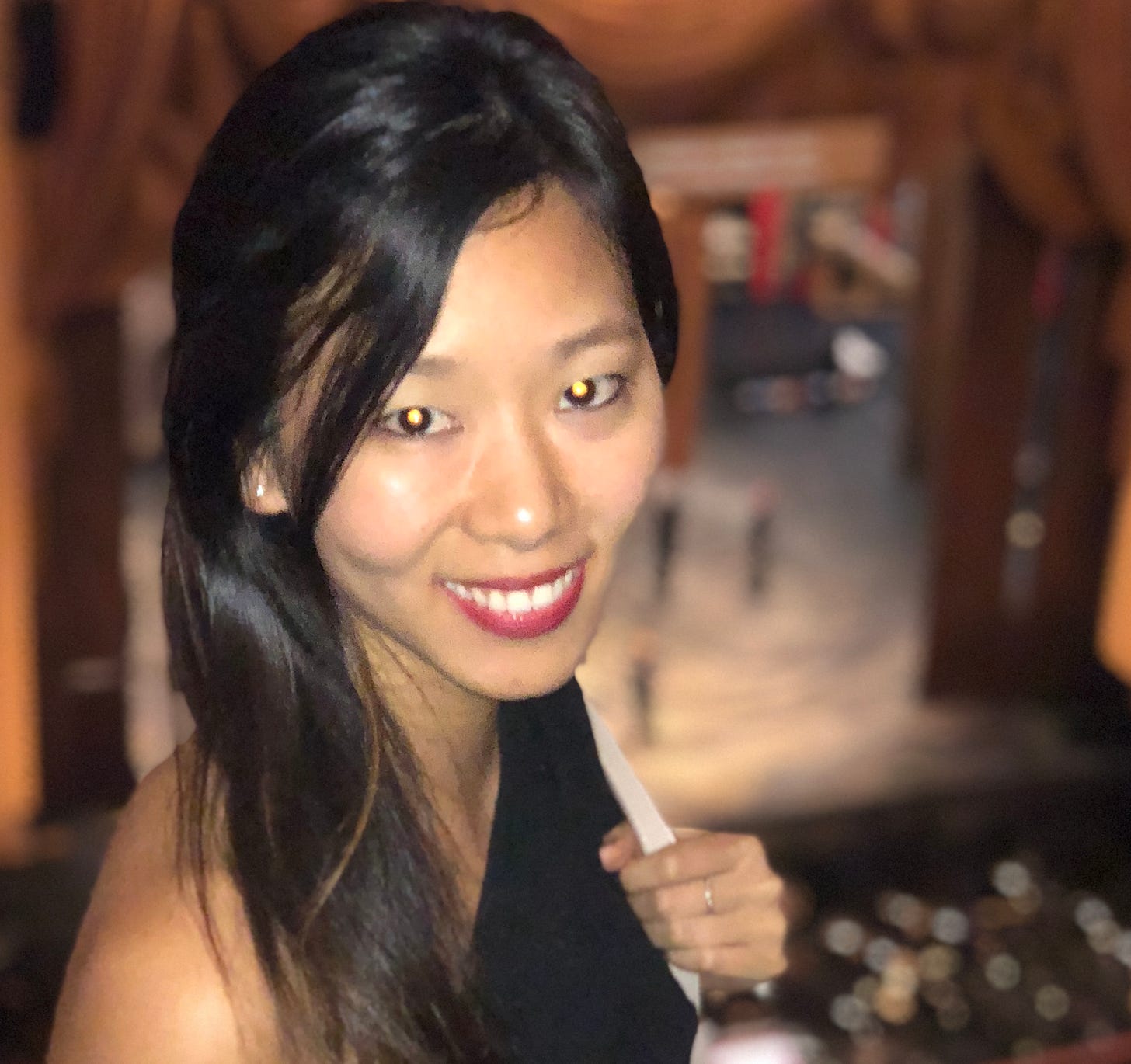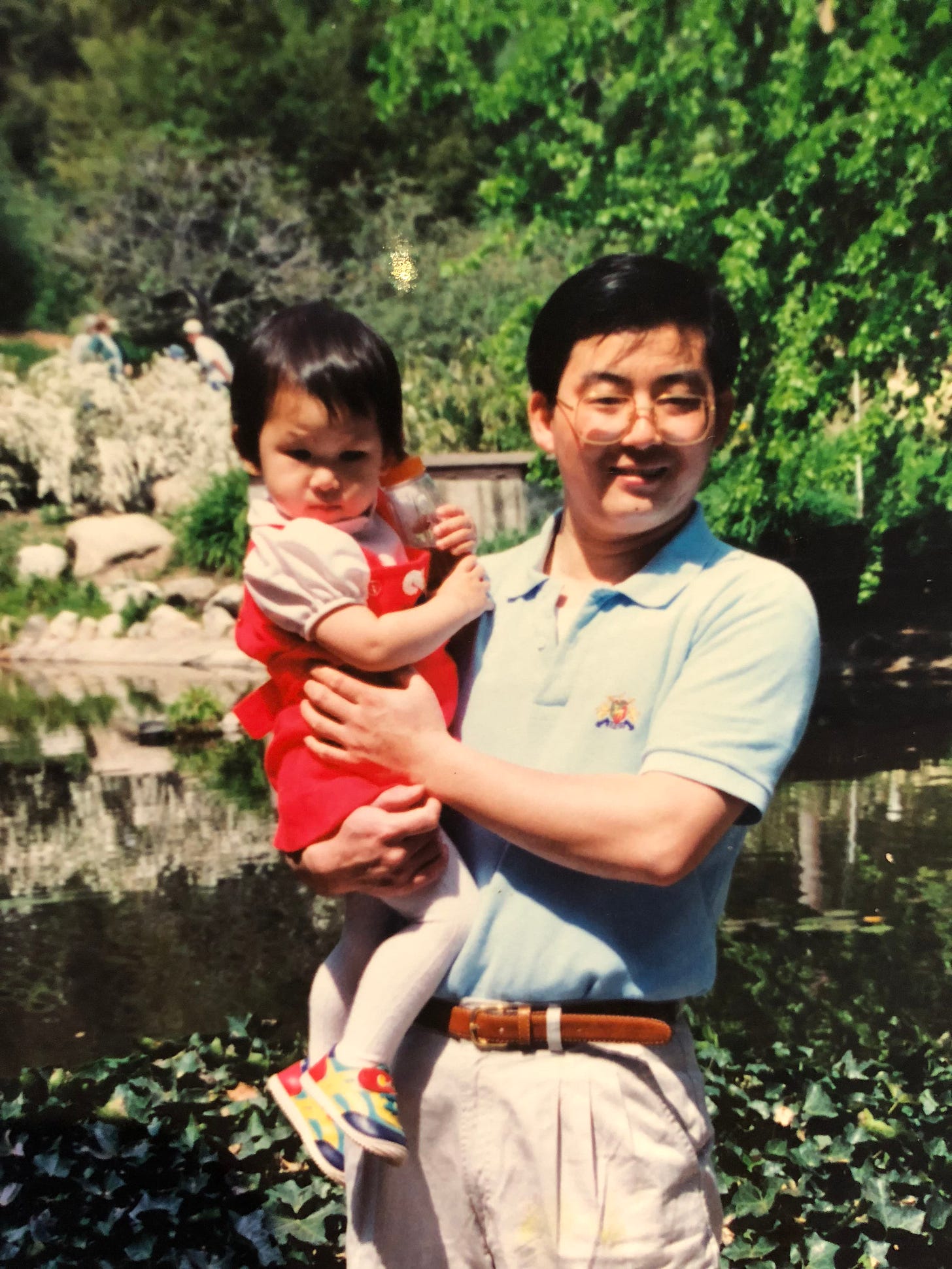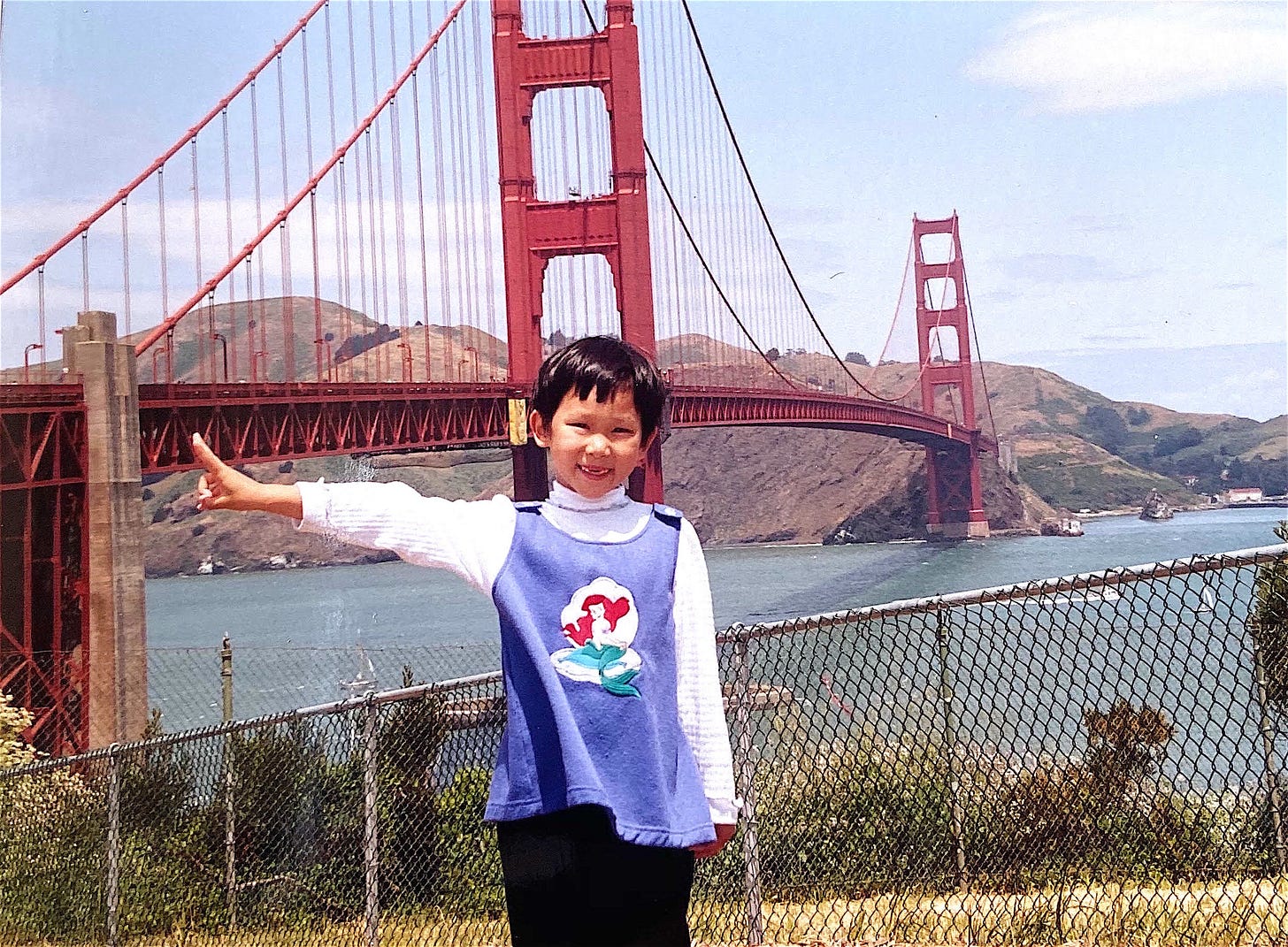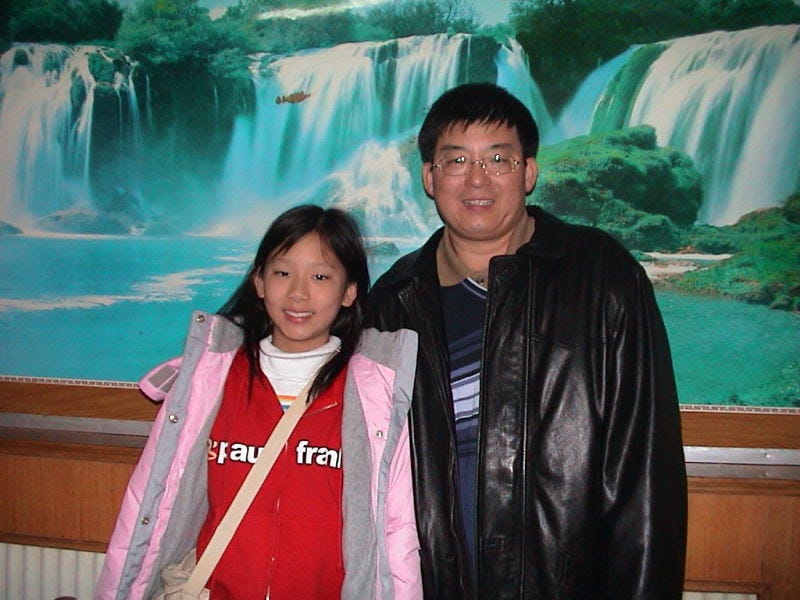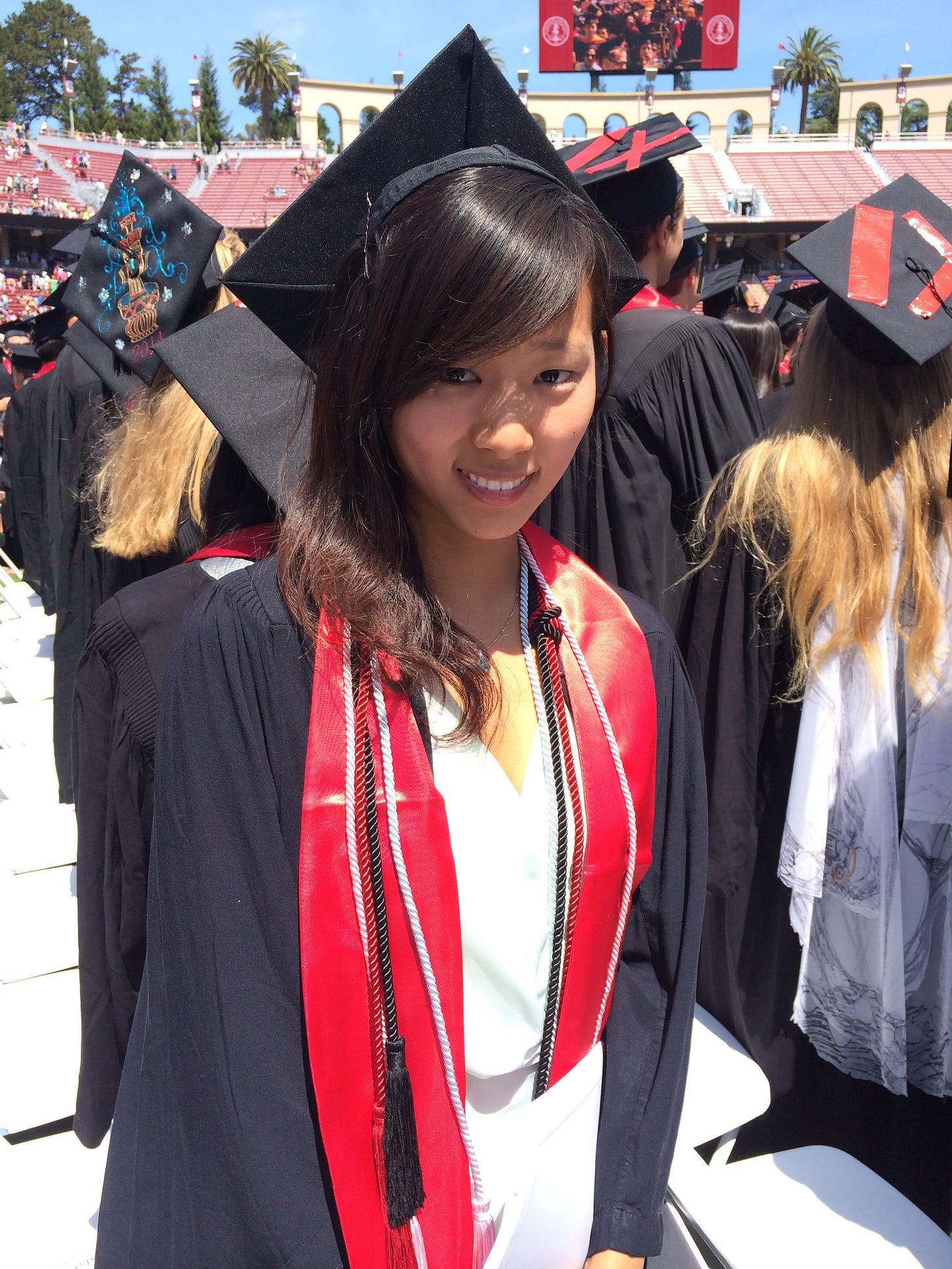She wants to show the world her version of an Asian Nerd Girl.
She sees that in the darkest of times the solutions are found not in silos but at the intersections of different industries and cultures.
MUD CRABS IN THE GOBI DESERT BY EMILY TIAN 34THPARALLEL MAGAZINE ISSUE 82
This is my story of a Father and Daughter in the parallelism of their lives. The Father is born in the Chinese Great Famine and the Daughter seeks her identity as an Asian American.
1963: Father is born in 1963 in the Great Chinese Famine that killed tens of millions of people. In the Cultural Revolution, Father’s family is labeled radical Capitalist for being landowners and part of the “Intellectual Class”.
Daughter is born in 1992 in sunny Southern California in a newly-constructed hospital funded by the city of Irvine. The bedsheets at the hospital are white, pristine, sanitized. At birth she is a US citizen, Chinese American.
Age 2: Father lives in a rural town in Zhejiang Province with a peasant nanny while his parents are exiled to work in the oilfields of the Gobi Desert near inner Mongolia, 1200 miles away. He is lucky to have human breast milk.
Age 2: Daughter drinks the best fresh milk on the market. She loves milk so much she throws up just to be fed more milk. She cuddles her Paddington Bear blanket. She makes her first flight to China that year.
Age 4: Father’s younger sister is born in a village by the Gobi Desert in Qing Hai-Tibet Plateau. She is malnourished at birth. She contracts a life-threatening bone marrow disease. The family takes her to a Shanghai hospital.
Age 4: Daughter goes to pre-school where a teacher takes her Paddington Bear blanket and writes on it in permanent marker “Emily Kim”. Her name is Emily Tian. Daughter pinches back an Iranian girl with little golden earrings who bullies her on the monkey bars.
Age 7: Father’s family move back from Shanghai to the Gobi Desert. He has never gone to school. He has five Chinese classic books that the family has preserved in the Great Book Purge of the Cultural Revolution. Father can’t read a word but flips the pages as often as he can, trying to learn to read through osmosis.
Age 7: Daughter is chosen to be the lead in a third-grade play. She is a singing Asian Little Red Riding Hood. She doesn’t know how to sing let alone act. Her voice is scratchy. She skips and dances in her little white dress and red cape.
Age 13: Father moves with his family to Liaoning, the province closest to North Korea. He attends his first school. He makes baskets and traps to catch river fish, shrimp, and mud crabs. He raises a few ducks, feeding them the shrimp. He is proud when the ducks lay their golden-yolked eggs. With his two closest friends he forms a sworn lifelong brotherhood. As heroes of Chinese lore did, they light incense, bow to each other, and ceremoniously slaughter a pig. They draw their own blood into a white liquor and drink it as a symbol of kinship.
Age 13: The Spanish-speaking caretakers at her day-care teach Daughter to love Kraft Macaroni & Cheese and microwaved bagel bites. She does her homework on her own. Of all the movie reruns only Roald Dahl’s Matilda speaks to her. She dances to Ricky Martin and wants to be like Baby Spice. She worries when she is the last child at day-care. The sun has set. Despite knowing her parents always work overtime, she asks, “Will they come for me?”
Age 17: Father passes his high school entrance exam but the high school rejects him because he doesn’t have the proper resident card. He enrolls in a mechanic vocational school for two years, learning the mechanical theory of cars from the Soviet Union. Over time he also learns about Japanese cars, then American cars. He teaches himself English to translate manuals and teach his fellow mechanics how to fix foreign cars.
Age 17: In high school Daughter embraces the principle of Learning for Learning’s Sake. Why shouldn’t she be proud of herself for dedicating countless hours of studying to chase her dream of college? She wants to show the world her own version of an Asian Nerd Girl. She takes this mindset to Stanford where she racks up some scholarships to pay for her first two years of college debt-free. She isn’t going to be a financial burden to her family.
Age 21: Father gets to go to a year of high school in Shanghai. He lives at his uncle’s house. He sleeps on the floor. He studies for the college entrance exam with his cousins. He doesn’t pass the exam. He doesn’t give up and studies all over again. He is finally admitted into Shanghai’s top quartile engineering school studying mechanical engineering. He meets his future wife, a doe-eyed Shanghainese girl in his class, the prettiest one of them all.
Age 21: Daughter’s college experience harmonizes her two cultures. It is a turning point in her life. When she compares her visits to Hamilton’s home in Harlem to Jefferson’s Monticello plantation in Virginia, she respects how two vehemently dissident leaders settled their philosophical differences and partnered to forge a better nation. On a trip to China she unexpectedly marvels at how China extends Western engineering to conjure infrastructure behemoths like the Three Gorges Dam and locally grow corporate titans like Foxconn and Alibaba. She sees how China 2.0 innovates to address the country’s overwhelming population. She is reminded that in the darkest of times the solutions are found not in silos but at the intersections of different industries and cultures.
Age 24: Father applies to emigrate to the United States. He dreams of the Land of Opportunity and the Tolling Bells of Freedom. The US is welcoming foreign students with technical backgrounds. UCI (University of California, Irvine) accepts him and the US embassy grants him a visa. He lives with his uncle in Huntington Beach on an air mattress. He has only $30 in his pocket. He saves his money to bring his betrothed to the US. It takes him two years working at a Chinese seafood restaurant from apprentice to sous chef.
Age 24: Daughter moves from one job to the next. She works hard but also enjoys her wild and free days. Her transition to adulthood isn’t always smooth. She never knows how to live with housemates in a rental house or understand how to buy groceries. She doesn’t know what professional life means or how to balance work with life. She travels to Spain, Puerto Rico, Japan, North and South Korea.
Age 28: Father funds his wife’s engineering graduate studies at UCI. She becomes pregnant. The ultrasound shows Daughter. “Not a first-born son,” she worries. Father says with a big smile, “We will welcome our beautiful little girl to this world.”
Age 28: Daughter falls in love with a Chinese-Filipino man whose family story mirrors her own, echoing the virtues of unrelenting resilience and family unit primacy. She realizes these values aren’t idiosyncratic to a single family or culture but sculpted under adversity of different forms. She also realizes the components of her identity will never be fixed, because each experience and interaction adds a new layer. She finds inner peace in these learnings. The boy moves back to the tropics, and she embarks on an international long-distance relationship.
EMILY TIAN
I am an amateur writer with no prior published works. I graduated from Stanford University with a Bachelor of Arts in Economics and a Master's of Sciences in Management, Science & Engineering.

